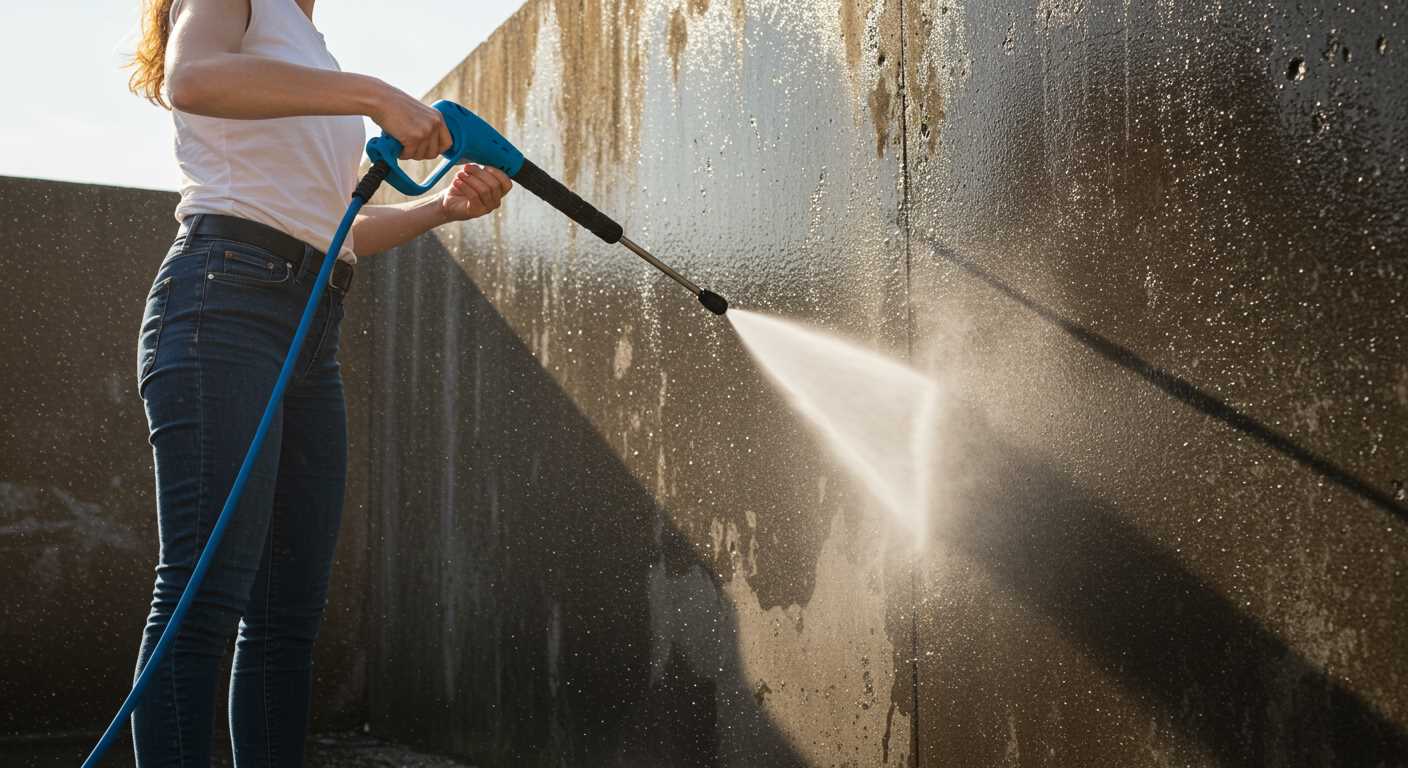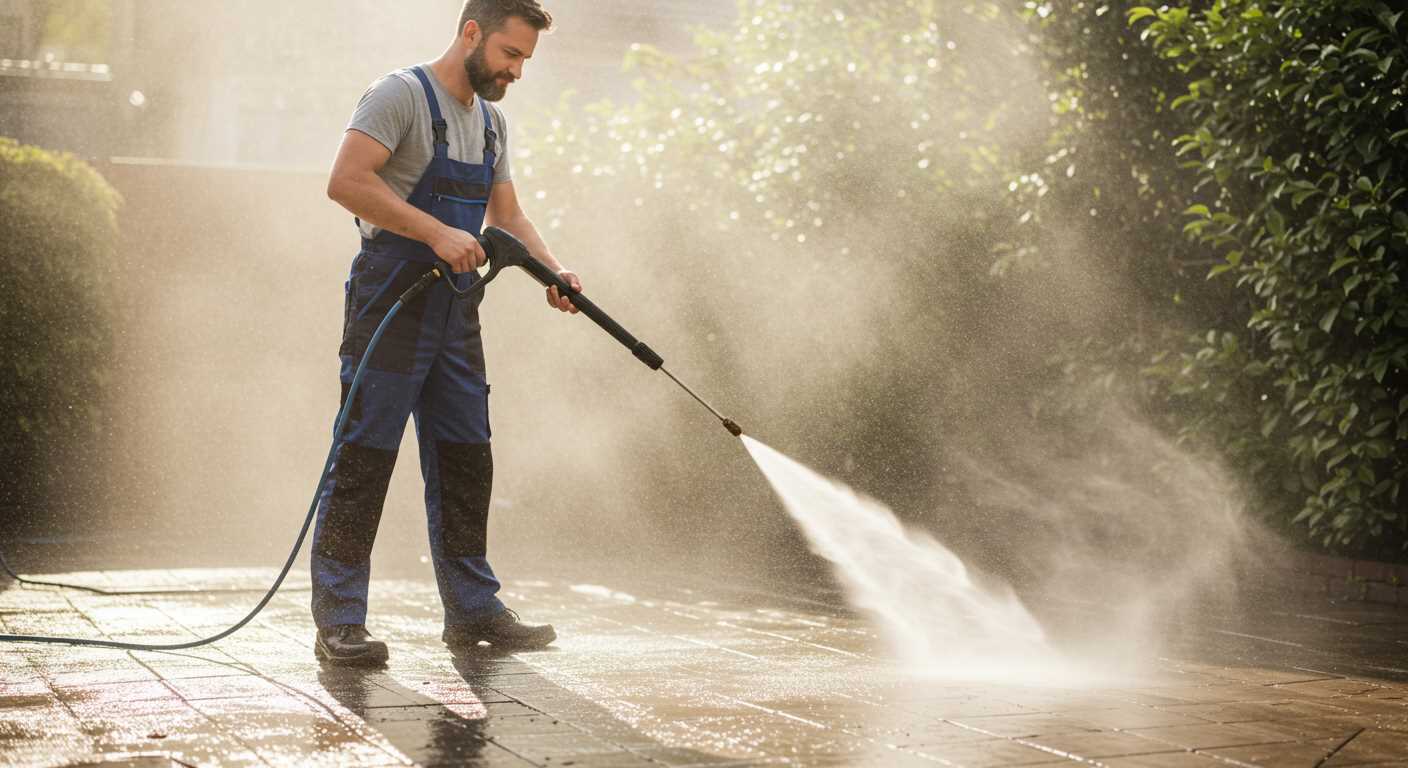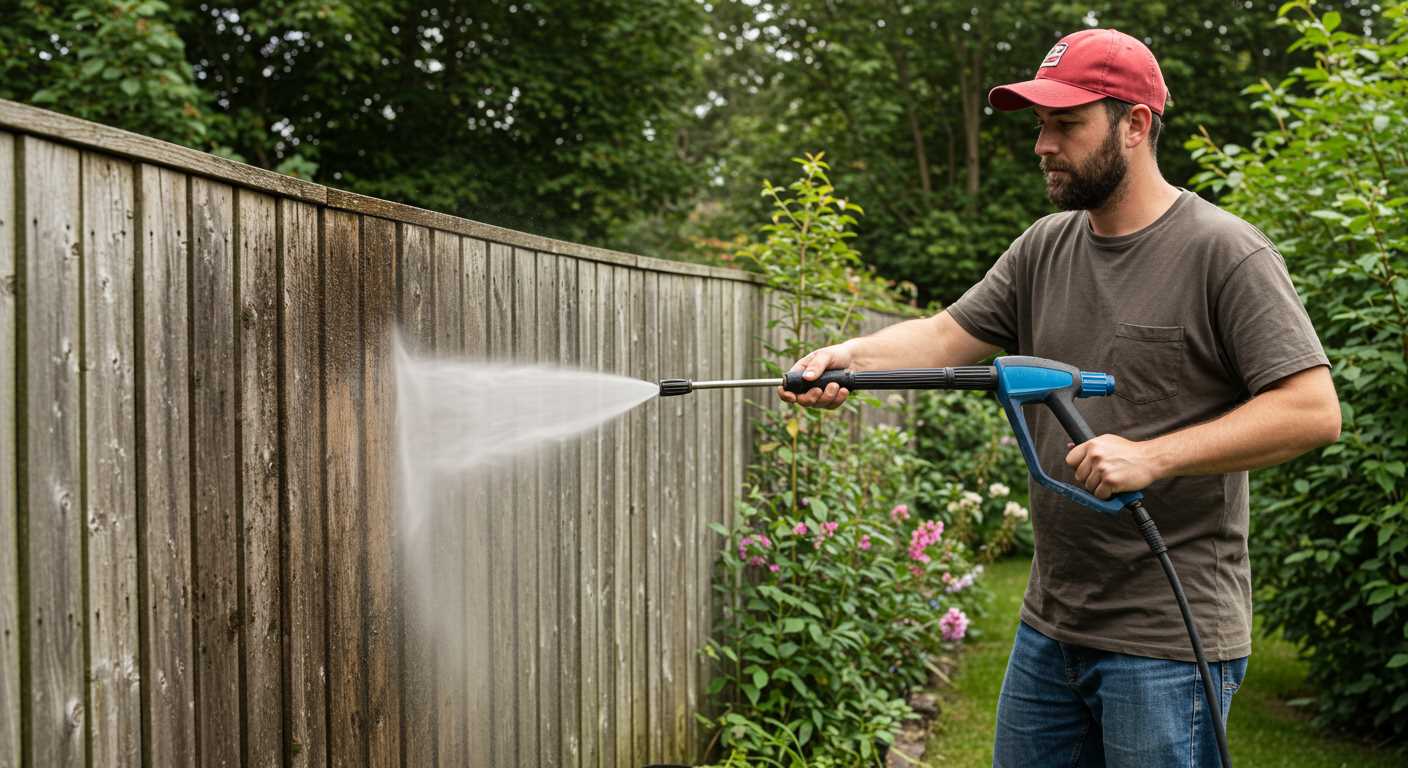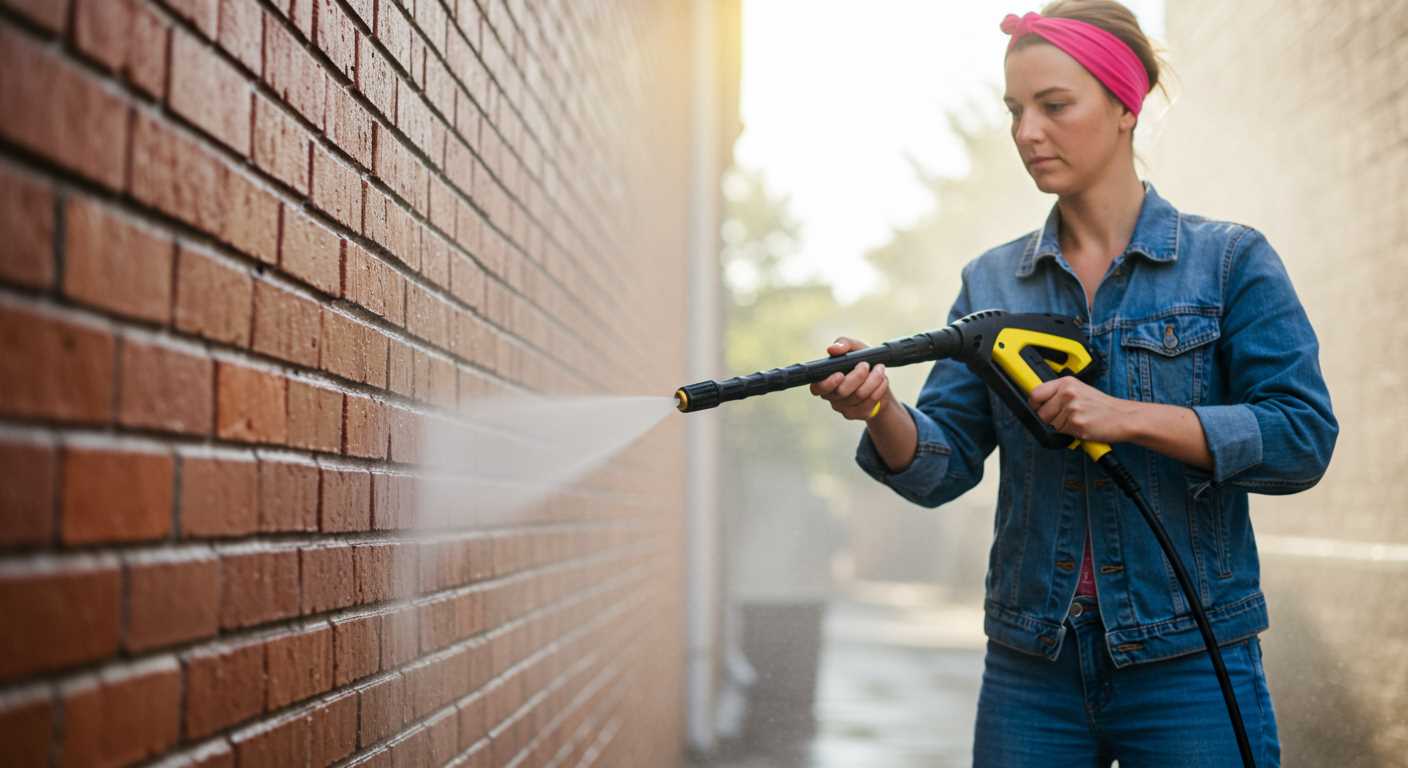



For optimal performance in your cleaning tasks, selecting a high-quality cleaning equipment wand is crucial. The efficiency of these tools hinges on their ability to concentrate water flow, producing a powerful jet that can effectively dislodge dirt and grime from surfaces. The heart of the wand’s operation lies in its nozzle design, which influences the pressure and angle of the water stream. A narrow nozzle aperture increases pressure, allowing for targeted cleaning, while a wider one disperses water for larger areas.
Each attachment offers unique functionalities, such as rotating or telescoping capabilities, enhancing versatility for various tasks. By adjusting the spray pattern, you can tailor the wand’s output to meet specific cleaning needs, from delicate surfaces to tougher stains. Utilizing the correct nozzle not only enhances results but also minimizes the risk of damage to surfaces.
Maintenance of the cleaning wand is also fundamental to its longevity and performance. Regular checks for blockages and wear can prevent inefficient operation. Additionally, ensuring a proper fit with hoses and compatible equipment will enhance the overall cleaning experience. Investing time in understanding the technical aspects ensures you maximise the benefits of this essential cleaning tool.
Understanding the components of a pressure washer lance

Focusing on the components provides clarity on functionality. A typical cleaning wand comprises several key elements that influence performance.
The nozzle serves as the outlet for the water stream. Its design determines pressure and spray pattern; commonly, nozzles come in various colours indicating degrees of pressure. Selecting the right one for the task is critical.
The trigger mechanism controls water flow. Engaging the trigger allows water to exit the nozzle, while releasing it stops the flow. This simple feature enhances user control and efficiency.
Another element is the lance body, typically constructed from metal or durable plastic for longevity. The length of the lance can influence reach and comfort, especially for overhead tasks or when dealing with hard-to-reach areas.
A safety lock is an important addition, preventing accidental activation when not in use. This feature adds a layer of safety, particularly in households with children or pets.
Many models include adjustable extensions, allowing users to customise the length based on specific needs. This versatility is advantageous for varied cleaning applications.
Understanding each component’s role allows for better maintenance and selection for specific tasks. Regular checks and cleaning of the lance will ensure longevity and optimal performance.
Influence of Water Force on Cleaning Performance
In my experience, the force of water plays a pivotal role in achieving optimal cleanliness. Higher water force can significantly enhance the removal of stubborn dirt, grime, and stains. For most residential tasks, a range between 1300 to 2000 psi is effective for general cleaning, while tougher jobs may require forces upwards of 2500 psi. It is essential to match the intensity of the flow with the surface being treated; for example, delicate surfaces like wood or painted areas should be approached with lower pressure to prevent damage.
The nozzle type also contributes immensely to cleaning efficacy. A narrower spray pattern concentrates the force of water, making it ideal for specific spots or challenging buildups, whereas a wider spray can cover a larger area, albeit with reduced intensity. Adjusting the nozzle according to the task at hand allows for both versatility and precision in cleaning.
Water temperature is another factor worth considering. Heated water can enhance the cleansing ability, especially when dealing with oily substances or grease. Combining heat with appropriate water force results in a more effective cleaning process, stripping away residues that cold water might struggle with.
In addition, the distance from which the water is applied impacts effectiveness. Maintaining the right distance ensures that the force reaches the surface without causing harm. Too close can lead to etching or splintering, particularly on softer materials, while too far diminishes the cleaning ability.
Regular maintenance of the equipment also influences performance. A clean, well-maintained system supports consistent delivery of water force, ensuring efficiency for each use. Clogged nozzles or hoses can reduce effectiveness and may require more effort to achieve the desired results.
Ultimately, aligning water force with surface type, nozzle selection, temperature, and distance will result in a more successful cleaning outcome. Each of these elements contributes finely to the overall capability of the cleaning solution. With careful consideration, you can maximise the results of your cleaning sessions.
The role of nozzles in adjusting spray patterns

To achieve optimal cleaning results, selecting the right nozzle is critical. Most models come with interchangeable nozzles that adjust the spray angle and pressure, allowing for tailored performance based on the task. For instance, a zero-degree nozzle produces a concentrated jet ideal for tough stains, while a 25-degree option offers a wider fan that’s perfect for rinsing large areas effectively.
Understanding colour coding is essential. For example, nozzles are often colour-coded with red, yellow, green, and white indicators representing different spray angles. Red signifies a narrow, powerful stream, whereas white provides the broadest coverage. Selecting the appropriate angle helps prevent damage to surfaces being cleaned. Using a high-pressure setting on a delicate surface can lead to unwanted abrasion or chipping.
Additionally, some advanced models feature adjustable nozzles, allowing users to shift from one pattern to another seamlessly without changing attachments. This versatility makes it easier to adapt to varied cleaning tasks quickly, whether that involves removing grime from a car or washing down a patio.
For effective cleaning, it’s wise to start with a broader spray angle before narrowing it down as needed. This technique maximises surface contact while minimising the risk of damaging fragile materials. Also, considering the distance from the surface during operation can impact the cleaning efficacy; maintaining optimal distance ensures that the force applied doesn’t exceed surface tolerance.
In my experience, taking the time to experiment with nozzle types yields a better understanding of what works best for different scenarios. This knowledge not only enhances cleaning efficiency but also prolongs the lifespan of both the equipment and the surfaces being cleaned.
Maintenance Tips for Prolonging Lance Lifespan
Regular inspection of all parts is a must. Look for signs of wear, corrosion or damage. If you spot any issues, replace the affected components immediately to avoid further damage.
Cleaning Procedures

- Flush the unit with fresh water after each use. This will remove any residual cleaning chemicals and debris.
- Use a soft cloth to gently clean the exterior surfaces, ensuring that dirt does not accumulate.
- Avoid using harsh chemicals or abrasive materials during the cleaning to prevent scratches and degradation of components.
Storage Recommendations
- Store the equipment in a dry, cool place to avoid moisture build-up, which can lead to rust and corrosion.
- Keep the lance and accessories organized and protected from impacts that could cause physical damage.
- If storing for an extended period, consider disconnecting hoses and nozzles to prevent any strain on the fittings.
Regularly replacing O-rings and seals can also help maintain performance and prevent leaks. Keep an eye on the connections; tight, secure fittings not only improve efficiency but also enhance longevity.
Finally, follow the manufacturer’s guidelines for usage and maintenance. Adhering to their specifications can considerably extend the lifespan of your equipment.
Common Issues and Troubleshooting Methods

Inconsistent water flow affects cleaning performance. Check for blockages in the hose or nozzle. Remove any debris, including dirt or accumulated residue that may restrict water passage.
Loss of pressure often indicates an air leak in the system. Inspect all connections, seals, and hoses. Tighten any loose fittings and replace damaged components.
Water Leakage
.jpg)
Leakage from the gun or attachments typically stems from worn seals or gaskets. Replace these parts as necessary. Additionally, ensure that all connections are secure–this can often resolve minor leaks.
Excessive Vibrations
Excessive vibration can point to unbalanced components or a failing motor. Verify that the attachment is properly seated, and inspect for any damaged internal components. Addressing these issues early can prevent more significant damage.
Choosing the right lance for specific tasks

Selecting the appropriate wand significantly impacts the cleaning process. For delicate surfaces, such as vehicles or wooden decks, opt for a model offering a wider spray pattern to distribute the force evenly, which prevents damage.
For stubborn grime on hard surfaces, a narrow spray pattern provides concentrated power, ideal for driveways or concrete. Ensure the lance’s material is sturdy enough to withstand high pressures without compromising on flexibility.
When tackling vertical surfaces, consider an adjustable option that allows customization of the angle of the spray, enabling better access to hard-to-reach spots. This feature reduces the need to constantly reposition.
If you’re working with detergents, utilise a lance specifically designed for that purpose to ensure compatibility and performance. Models equipped with a soap nozzle can safely mix and deliver cleaning solutions effectively.
In scenarios involving degreasing or heavy stains, a lance designed for high-efficiency should be chosen, maximising the force without excessive effort. The wider the nozzle’s diameter, the greater the water flow, thus enhancing cleaning capabilities.
Investing in interchangeable nozzles may be beneficial, allowing for quick switching between tasks. This adaptability can save time and improve overall efficiency during cleaning missions.
In professional settings, consider longer lances for reaching high areas, while a shorter design works well in tight spaces. Evaluating the specific task at hand ensures optimal performance and satisfaction with the cleaning outcomes.








